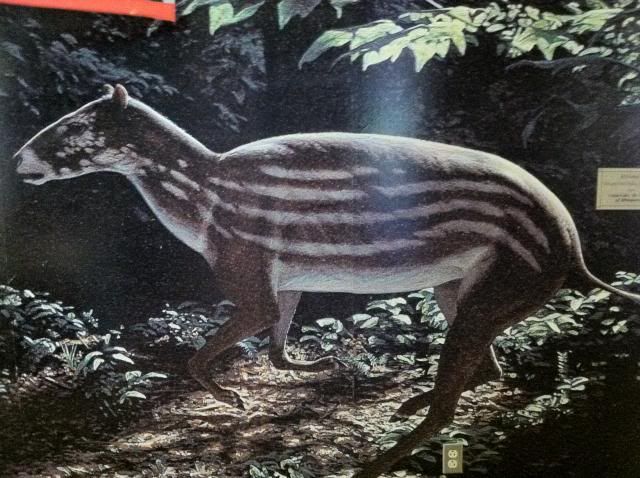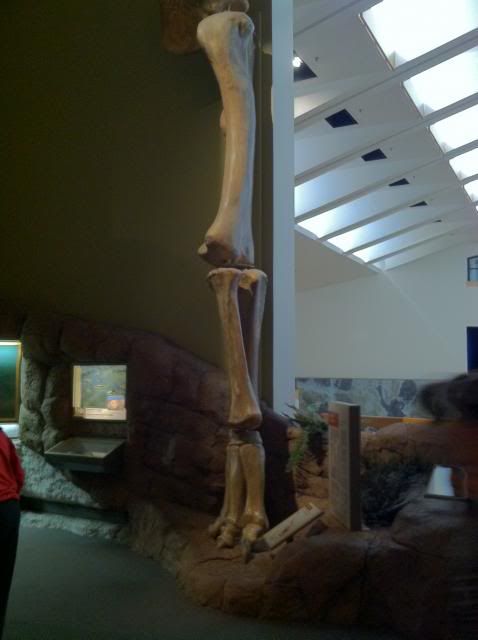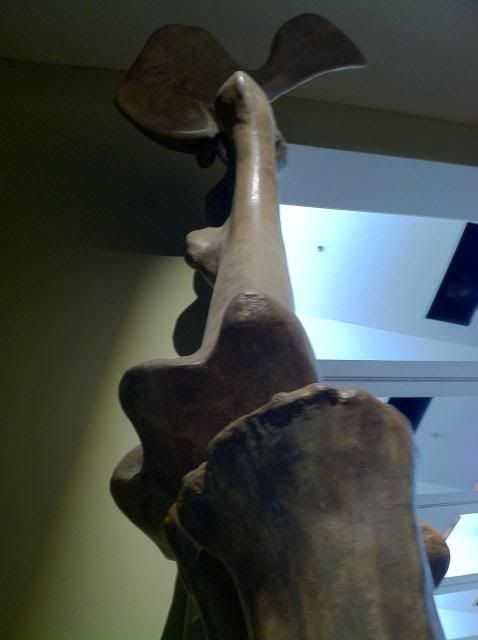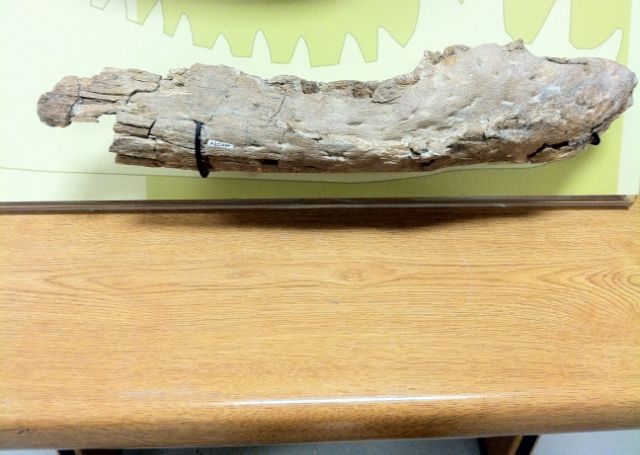Last month’s challenge will have a huge contrast to this month’s challenge. Before we get to that, we must name the winner. Isotelus came the closest with:
Those dainty little toes remind me of
Hyracotherium (vasacciensis…I think)
Hyracotherium vasacciensis is now considered a junior synonym for Eohippus angustidens.

(Taken at the New Mexico Museum of Natural History and Science)
When I posted this challenge, I actually did not know that the classification of H. vasacciensis had changed; I found that out doing the research for this post. It turns out that H. leporinum has more basal features shared with several perissodactyls (odd-toed ungulates) outside of the horse clade. Eohippus has features that are only present in Equidae, which is the reason behind the change.
Eohippus lived during the Eocene (56 to 33.9 million years ago) and ranged across North America. Eohippus was most likely a forest dwelling animal that fed on soft vegetation as a browser. Eohippus was ~20 cm tall and ~60 cm in length. This tiny critter had five toes on its forelegs and three on the hind legs, and would probably make an adorable pet.
Moving on to this weeks challenge:

(Taken at the New Mexico Museum of Natural History and Science)
In honor of the giant critter found in South America, I thought I would share another giant that once roamed the earth.

(Taken at the New Mexico Museum of Natural History and Science)
This second viewpoint is to help one get an idea of how large this critter once was.
Good luck.

